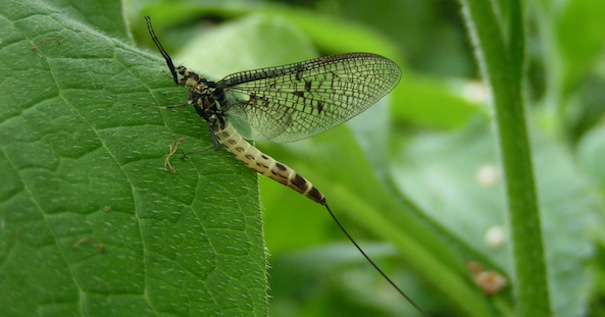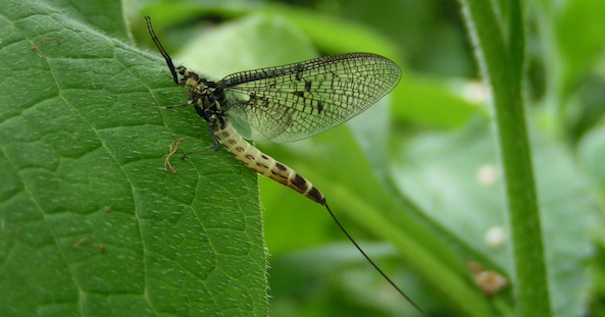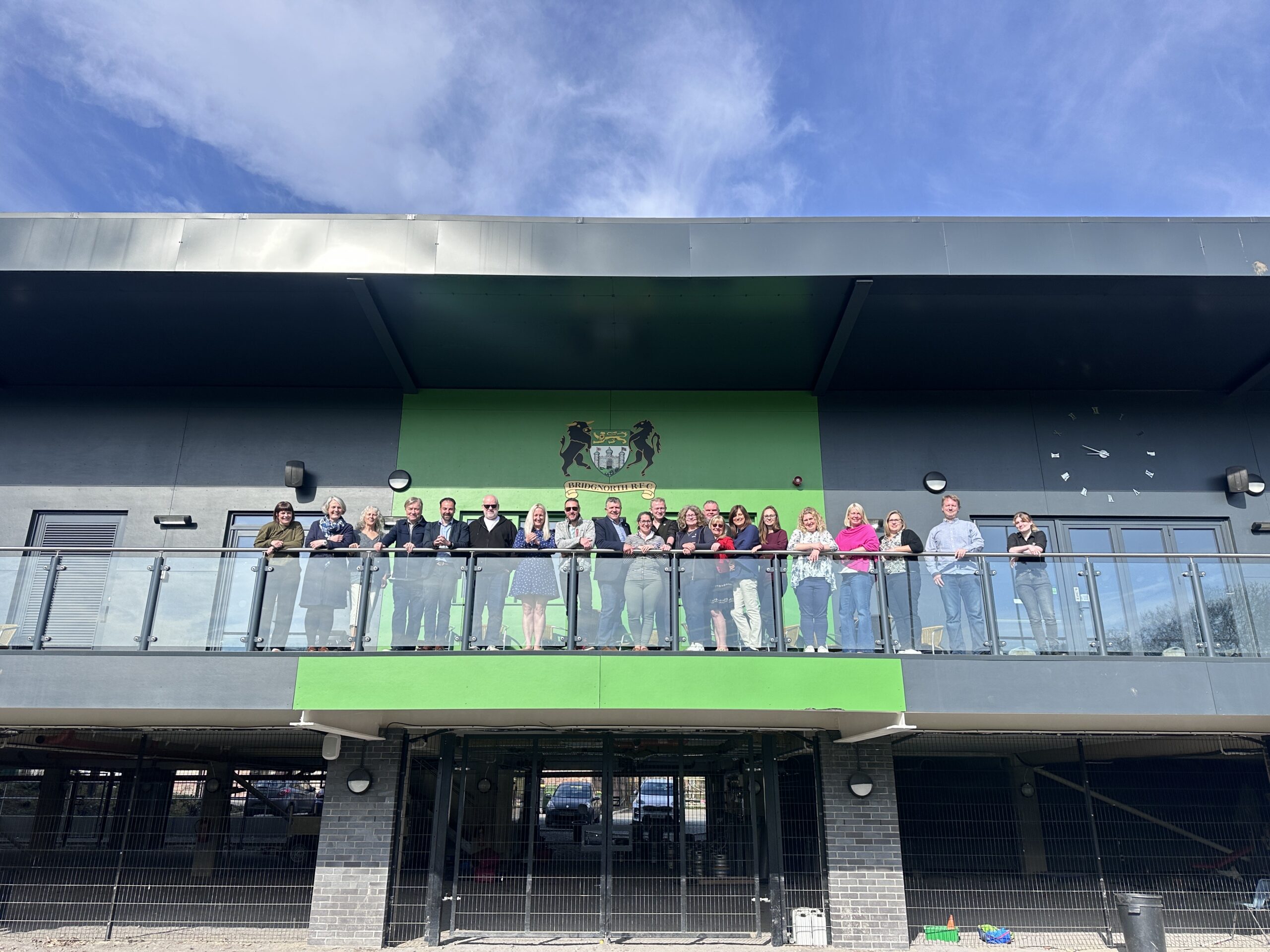
What’s What! nature expert Ed Andrews takes a look at the habitat of one of our local rivers, the Worfe, and learns about these fascinating but short-lived insects.
The latin name for the mayfly is Ephemera danica. The definition of ephemera is ‘things that exist or are enjoyed for only a short time’. This sums up the lifespan of an adult mayfly perfectly. These amazing insects live a maximum of 24 hours from hatching. They have no stomach and their mouthparts have become redundant for they do not feed. Their sole purpose is reproduction. Mayflies hatch en masse during May and June.
A good local place to witness the mayfly hatch is the River Worfe, to the east of Bridgnorth. At the small settlement of Rindleford, the river is lined by a row of large grey poplar trees ̵ it tumbles through pools and shallow sections and is never more than 30 feet wide. I took a walk along this section of river in late May, when the evening was still and overcast and the water a rusty brown after a couple of days of heavy rain. The bankside was a riot of colour with red campion and cow parsley in flower.
A watery dance
I sit beneath a group of alder trees and look across the water. Upstream from my vantage point there are no trees. In the light, I can see clouds of mayflies dancing over the water, and I try and follow the flight path of one mayfly. It rises up, spinning and tumbling through the air, seemingly without any pattern or purpose. Suddenly it parachutes towards the water and is momentarily caught in the surface tension before taking off again. Each time a mayfly lands on the water, tiny ripples appear then quickly disappear in the flow of water, just as the life of a mayfly is quickly lost in the river of time. I hear a splash as a trout rises, feasting on the bounty. I sit and watch the mayflies for over an hour, lost in the magic and serenity of that watery place. Just before I am about to leave I spot a mayfly floating motionless on the surface of the water. One wing is ajar, acting like a sail as it floats towards a watery grave.
It is the female insects that land on the water in order to lay eggs. The nymphs that hatch live in the water and feed on algae. They grow and shed their exoskeleton many times until eventually a nymph leaves the river and, through metamorphosis, becomes a dull-coloured, winged ‘subimago’, which changes again into a sexually mature adult. It is these insects that are dancing over the river, all trying to attract a mate. Mating takes place in mid-air. The male insects die soon after mating and the female soon after egg-laying.
Troubled times for the Worfe
The number of mayflies over the River Worfe would seem to suggest a healthy river. However, all may not be as it seems. In 2008 the Environment Agency assessed the River Worfe and eight streams that feed into it against the Water Framework Directive to see if they were in good ecological status. They found that eight were in poor or moderate condition and only one was classed as good. The Severn Rivers Trust and its partners have applied for a grant to start a project to improve the ecological value of the Worfe catchment.
One of the main problems is silt run-off from neighbouring farmland. This can smother and suffocate fish and other creatures and it also makes it hard for fish to spawn and can carry pollution into the river. The easiest way to prevent silt and pollution washing off fields is to leave a buffer strip alongside the river, which is not ploughed nor sprayed with chemicals. Livestock can also erode the river banks, inviting poaching and hence siltation. The River Worfe Habitat Improvement Project is already paying for stock fencing in places to prevent this from happening.
Aquatic invertebrates like mayfly nymphs are very useful for monitoring water quality. Some creatures are very sensitive to pollution whereas others will live in polluted water. By sampling aquatic invertebrates, it should be possible to gauge the increase in water quality and hence ecological value of the River Worfe through the duration of the project.
Around the same time that I visited Rindleford, I also took an evening walk along the River Severn. The bank was covered in the lush green leaves of comfrey. Amongst the leaves I could see the wings and shrivelled up bodies of spent mayflies, a reminder of the short lifespan of these insects. After a while, I spot something clinging to the underside of a leaf. Carefully turning the leaf over, I discover a freshly-emerged adult mayfly. She has a slender upturned body, long tail filaments and wings like stained glass windows… all hail Sabrina, the spirit of the river.
Do one thing for wildlife this month:
The Severn Rivers Trust is looking for volunteers to help with the River Worfe Habitat Improvement Project. They can offer training in identifying and recording riverflies and how to use that as a tool for monitoring water quality. For more information, please visit the webpage at riverworfe.com






